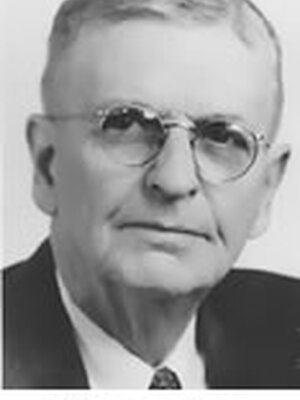
When William Rose was 19 he started as a graduate student in the Sheffield Scientific School at Yale. Four years later, in 1911, he finished his PhD with L. B. Mendel, finishing a series of studies on the origin of creatine and creatinine. Rose served in several academic posts before accepting a position at the University of Texas Galveston Medical School to organize a department of biochemistry. In 1922, he went to the University of Illinois as professor of physiological chemistry, a title which was changed to professor of biochemistry in 1936. From 1922 to 1955 he transformed his department into a center of excellence for the training of biochemists.
Rose discovered and structurally characterized the amino acid threonine and showed that is "essential", i.e., not manufactured by the body, and must be obtained from the diet; also showed that different amino acids are essential to different organisms; studied creatine and creatinine metabolism, endogenous purine metabolism, neophropathic effects of dicarboxylic acids and their derivatives, and nutrititive properties of amino acids; investigated the role of proteins in metabolism, the metabolic interrelationships between amino acids, and the determination of the amino acid requirements of human subjects; showed that histidine, which is an essential amino acid for all animals tested so far, is not essential for man. Over the course of his career he published 124 research, biographical, and review articles.
Rose was honored many times for his achievements, being elected to the National Academy of Sciences in 1936 and receiving the National Medal of Science in 1966.
- J. Nutrition 1981, 111, 1313-1320.
- McGraw-Hill Modern Men of Science; McGraw-Hill: 1966; vol. 2, p456-457.
- Fed. Proc. (Proc. Fed. Am. Soc. Exp. Biol.) 1979, 38, 2684-2686.
- Annals NY Acad. Sci. 1979, 325, 229-234.
- J. Chem. Ed. 1969, 46, 759-763.
The Journal of Biological Chemistry biography
ACS National Historic Chemical Landmarks biography